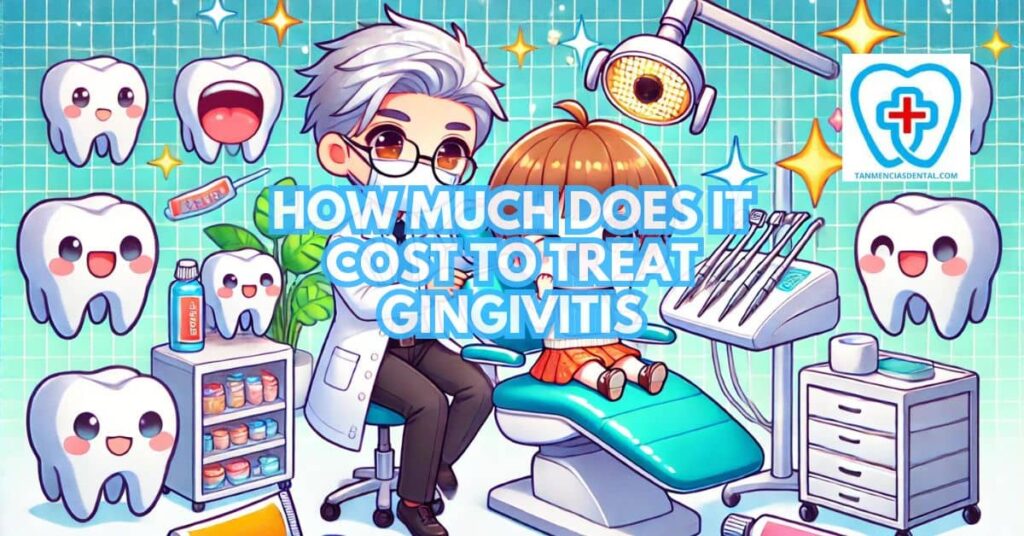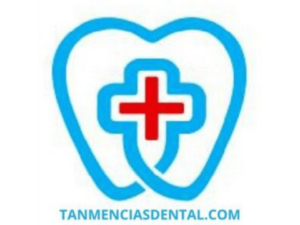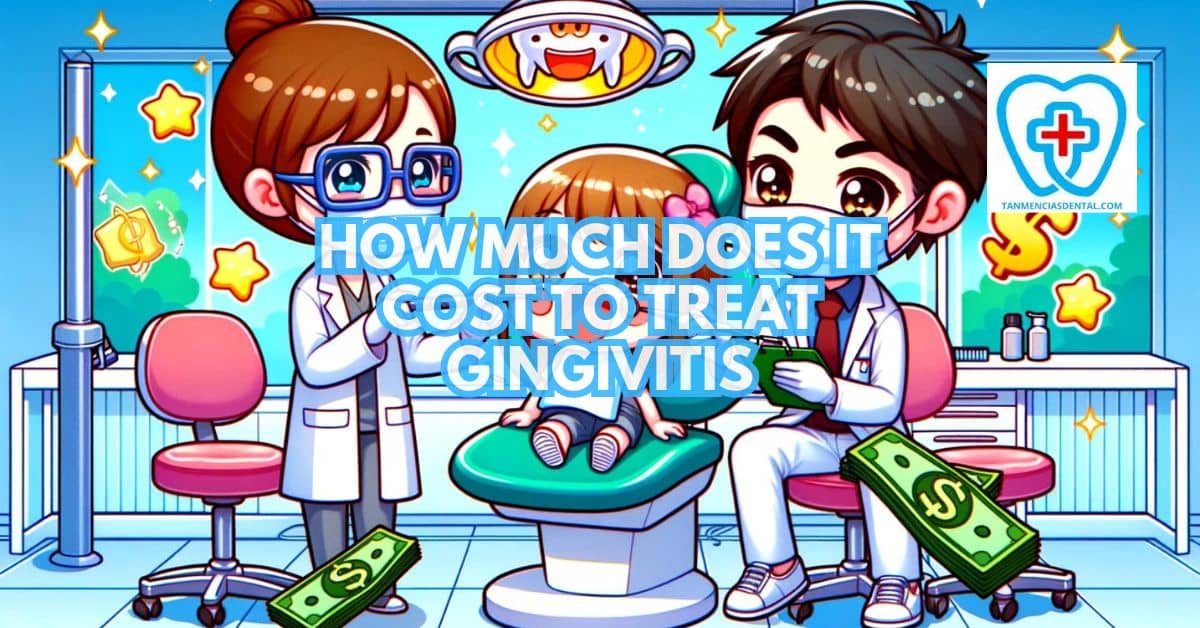Gingivitis is the first stage of gum disease and causes red, swollen gums that may bleed when you brush your teeth.
If you treat it early, you can prevent it from becoming more serious and avoid higher costs for advanced dental work.
Many people wonder, “How much does it cost to treat gingivitis?”
Understanding these costs can help you make better decisions about your dental care.
We’ll explore the different factors that affect treatment prices and the options available to manage gingivitis effectively.
1. Gingivitis vs. Periodontal Disease: Understanding the Stages
Gingivitis and periodontal disease are two stages of gum problems that differ in severity and treatment.
Gingivitis occurs when plaque, a sticky layer of bacteria, builds up on the teeth and gums, causing swelling, redness, and bleeding.
If left untreated, it can develop into periodontal disease, which damages the bone and tissues that support the teeth.
Gum disease treatment in the early gingivitis stage is simpler, involving regular dental cleanings, proper brushing, and flossing, which can reverse the condition.
However, once periodontal disease sets in, treatment becomes more complex and costly, often requiring deep cleanings, medications, or even surgery.
The cost of periodontal treatment increases because it involves advanced procedures to stop the disease from worsening and to repair damaged tissues.
To prevent expensive treatments and protect their teeth and gums, patients should visit a dentist as soon as they notice signs like swollen gums, persistent bad breath, or bleeding when brushing.
🦷 Choosing the Right Family Dental Care in Marikina
2. What Affects the Cost of Gingivitis Treatment?
Several factors influence the overall cost of gingivitis treatment, and understanding them can help patients plan for their care.
The severity of the condition is a major factor; mild gingivitis may only require a routine dental cleaning, while more advanced cases may need deep cleanings or specialized care.
A dental hygienist often performs the initial cleanings, but severe infections may require the dentist’s intervention for further treatment.
If gingivitis progresses, additional procedures to prevent periodontal disease may be necessary, and periodontal disease treatment is significantly more expensive.
Geographic location also plays a role, as dental services tend to cost more in urban areas due to higher overhead expenses.
Diagnostic tools, like X-rays, may add to the total cost by helping the dentist assess the gum and bone health in greater detail.
By addressing gingivitis early through regular cleanings and professional care, patients can avoid more complicated and costly treatments down the road.
🦷 Dentist vs. Nurse: The Dental Care Duo
3. How Your Diet Influences Gum Health
Eating a balanced diet is essential for keeping your gums healthy and preventing gingivitis.
Foods rich in vitamins and minerals, like fruits and vegetables, help strengthen your gums and fight infections.
On the other hand, consuming too many sugary and starchy foods can lead to plaque buildup, which irritates your gums and causes them to become inflamed.
By choosing nutritious foods and limiting sugary snacks, you can naturally maintain better gum health and reduce the need for expensive dental treatments.
Moreover, staying hydrated by drinking plenty of water helps wash away food particles and bacteria, further protecting your gums from gingivitis.
🦷 The Hidden Benefits of Nighttime Brushing
4. A Range of Treatments: From Cleanings to Deep Procedures
The treatment spectrum for gingivitis starts with professional dental cleanings to remove plaque and tartar buildup.
If gingivitis has progressed, a dentist might recommend scaling and root planing, which are more intensive and costlier.
These procedures cleanse below the gumline and smooth the roots to promote gum reattachment.
Advanced treatments might also include medication or even surgical interventions in severe cases.
Each level of treatment comes with different frequencies and complexities, directly affecting the overall treatment cost.
🦷 Brushing Teeth with Charcoal: Worth the Hype?

5. Average Costs: Budgeting for Common Treatments
Understanding the typical costs of gingivitis treatment can help you budget effectively.
Basic professional cleaning, which can prevent or manage early gingivitis, may cost between PHP 3,500 and PHP 9,000, depending on your location and the dental office.
For more advanced gingivitis, deep cleaning treatments such as scaling and root planing might range from PHP 7,000 to PHP 16,000 per quadrant of the mouth.
These estimates vary based on the dentist’s expertise, the technology used, and the overall health of your gums.
Patients should consider these costs as investments in their oral health, potentially avoiding more severe and expensive treatments later.
🦷 How Not Brushing Affects Your Health
6. Does Insurance Help? Understanding Coverage Options
Dental insurance often covers preventive care, including treatments for gingivitis, which may reduce your out-of-pocket expenses.
Most policies typically cover a significant portion of the cost of routine cleanings and checkups, which are crucial for preventing gingivitis.
However, coverage for more extensive procedures like scaling and root planing can vary, with some insurers covering up to 50–80% of the cost.
It’s important to review your dental insurance plan details or speak with your insurance provider to understand what aspects of gingivitis treatment are covered.
This knowledge can significantly affect your financial planning for dental health care.
🦷 Why You Should Consider Becoming a Dental Nurse
7. Alternative Approaches for Mild Gingivitis
For those with mild gingivitis, less invasive and more cost-effective treatments are available.
Improved daily oral hygiene, such as brushing twice a day and flossing regularly, can reverse mild gingivitis without additional medical intervention.
Regular dental visits for cleanings and exams help maintain gum health and prevent the condition from worsening.
Natural remedies, such as using saltwater rinses or essential oils like tea tree oil, have also been suggested to support gum health.
These alternative methods should be discussed with a dentist to ensure they are safe and effective for your specific condition.
🦷 Sore Throat After Brushing: What’s the Cause?
8. Early Intervention is Key: Saving Money in the Long Run
Addressing gingivitis early on can prevent its progression to more serious gum diseases, ultimately saving money and preserving oral health.
Regular dental checkups facilitate early detection and treatment, significantly reducing the likelihood of needing more complex and costly procedures in the future.
Early treatments, such as routine cleanings and adopting better dental hygiene practices, are generally less expensive and less invasive.
Educating yourself about the signs of gingivitis and maintaining consistent dental care routines are vital steps in managing health costs.
Prevention not only saves money but also minimizes discomfort and potential long-term damage to your gums and teeth.
🦷 Toothache After Dental Work: Causes & Relief
9. Financial Assistance Programs: Help When Needed
For individuals facing financial hurdles, various assistance programs may offer relief.
Dental schools frequently offer services at a reduced price where dental students administer care under professional supervision.
Charitable organizations and local health departments may also have programs to assist those who cannot afford dental care.
Some dental clinics offer sliding-scale fees based on income, making it more accessible for low-income patients to receive treatment.
Exploring these options can provide essential dental care without overwhelming financial strain.
🦷 Teeth Cleaning with Braces: Is It Possible?
10. The Price of Neglect: Why Untreated Gingivitis Costs More
Neglecting the signs of gingivitis can lead to severe and costly dental issues.
As the condition progresses, treatment becomes more complicated and expensive, often involving surgery, grafts, or other extensive procedures.
Delayed treatment can also result in tooth loss, requiring dental implants or dentures, which are significantly more costly than preventive measures.
Additionally, advanced gum disease can lead to systemic health issues, potentially increasing medical expenses.
Regular dental care is crucial to avoiding these high costs and maintaining overall health.
🦷 Why Are Dental Crowns So Expensive?
11. Talk to Your Dentist: Personalized Diagnosis and Cost Estimates
Consulting with your dentist is essential for obtaining a tailored diagnosis and understanding the potential costs involved.
A dentist can assess the severity of your gingivitis and recommend the most appropriate and cost-effective treatment plan.
During your visit, ask for a detailed breakdown of all expected costs, including any follow-up care and additional treatments that might be necessary.
This direct communication helps avoid unexpected expenses and allows for better financial planning.
In addition, dentists can advise on insurance coverage and available payment plans to manage costs.
👨⚕️ Conclusion
Effectively managing the costs associated with treating gingivitis involves early detection, understanding treatment options, and utilizing financial assistance when necessary.
By prioritizing dental health and taking proactive steps towards prevention, you can avoid the progression of gum disease and related expenses.
Investing in regular dental care not only saves money in the long run but also contributes to overall well-being.
Remember, the cost of preventive care is always lower than the cost of treating advanced dental diseases.
Prioritize your dental health today to ensure a healthier, more financially stable tomorrow.
😊 Self-Promotion
Experience personalized and gentle dental care at Tan-Mencias Dental Clinic, conveniently located in Parang, Marikina City.
Whether you’re dealing with gingivitis or just need a routine checkup, our friendly team is here to help you achieve the best oral health.
You can easily reach us by calling 9171451074, contacting us via our Facebook page, or by filling out our online form for any questions or concerns.
We’re committed to making your dental visits comfortable and stress-free.
Visit us today and let us care for your smile with the attention it deserves!

